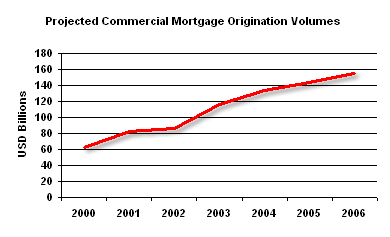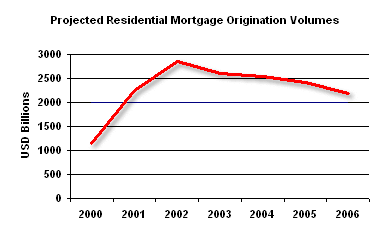| New York, NY, USA April 30, 2004 Unlike residential mortgages, Celent predicts US commercial mortgage origination volumes will remain strong over the next few years, despite the inevitable rise in interest rates.   Celent痴 latest report, " ," looks at the commercial mortgages marketplace, the impact of interest rate fluctuations, and how technology can best be utilized to bring greater efficiency and cost savings to this product line. While retail mortgage volumes have surged over the last few years as a result of historically low interest rates, growth has been more gradual in the commercial sector. "Commercial mortgages are less vulnerable to interest rate fluctuations, are subject to early repayment penalties, and in general, are slower to react to market changes due to their greater complexity," explains Christine Barry, analyst in Celent痴 banking team. "Even in 2003, when the sector did experience a sharper rise in volume, it was less a result of low interest rates and more reflective of a slowly improving economy and growing interest in commercial real estate as an investment." The commercial mortgage industry is in need of change. Continued growth will necessitate new technology and shift the industry away from the manual processes, unintegrated systems, and widespread use of Excel spreadsheets. While the complexity and often unique nature of these transactions limit the perceived potential for high levels of business process automation, there are several areas in which technology can be better utilized. In fact, a case study on GE Real Estate (included in the report) illustrates how technology has helped the lender to expand and better manage its portfolio, shorten its total cycle times by 10-20%, and better serve its customers, without increasing its staffing. As a leader in the industry, other lenders are likely to look to GE痴 accomplishments and follow suit. Lenders must deploy the necessary technologies in order to prepare themselves for the higher volumes to come. Commercial mortgages are often the highest earning assets a bank has. As such, the product line they represent is too important to be allowed to suffer from inefficiencies and data inconsistency. A is available online. | of Celent Communications' Wholesale Banking research service can download the report electronically by clicking on the icon to the left. Non-members should contact info@celent.com for more information. |
|





